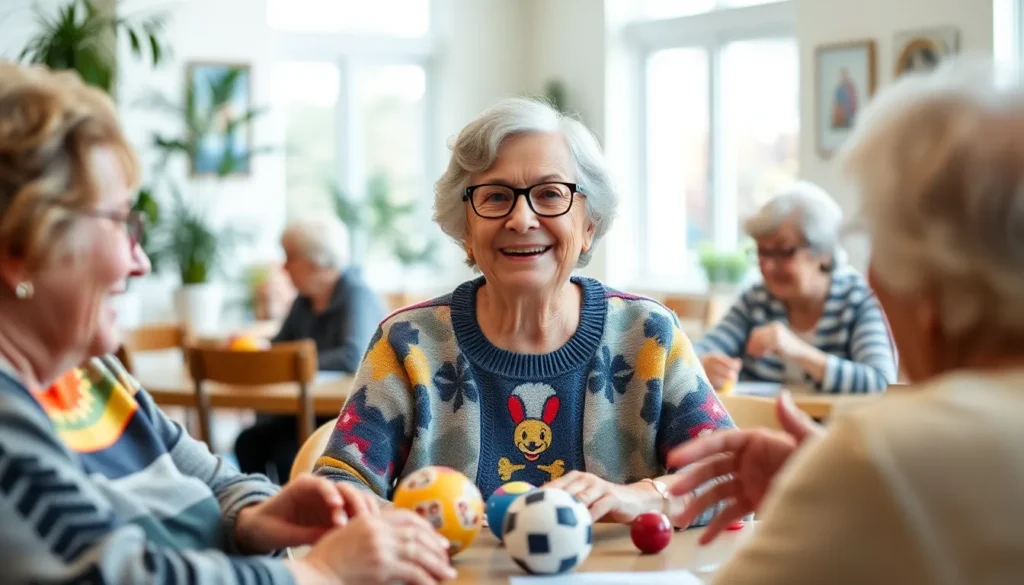In a world where headlines often focus on the latest celebrity gossip or tech innovations, nursing home news deserves its moment in the spotlight. After all, who wouldn’t want to know what the charming residents of Maple Grove are up to? From bingo tournaments that turn into epic battles to the latest culinary creations from the kitchen staff, there’s never a dull day in these vibrant communities.
Nursing homes are more than just places for care; they’re bustling hubs of laughter, friendship, and sometimes downright mischief. With an aging population, the stories emerging from these facilities are not just heartwarming; they’re essential. So grab a comfy chair and settle in, because the latest updates from the world of nursing homes are bound to surprise and entertain.
Table of Contents
ToggleLatest Trends in Nursing Home News
Nursing homes evolve continuously, adapting to challenges and opportunities. Recent trends highlight significant shifts in resident experiences and care delivery.
Impact of COVID-19 on Nursing Homes
COVID-19 profoundly affected nursing homes, emphasizing the need for robust infection control measures. Many facilities implemented strict visitation policies in response to outbreaks. Vaccination campaigns aimed at residents and staff reduced transmission rates significantly. A focus on mental health emerged, addressing the isolation many residents faced. Programs promoting virtual visits and technology integration became popular, allowing families to connect despite physical barriers. Community support is vital, with local organizations stepping up to provide resources and assistance.
Changes in Regulations and Policies
Regulatory updates shape healthcare practices in nursing homes significantly. New policies focus on enhancing resident rights and improving care quality. Increased scrutiny and guidance emerged in response to the pandemic, pushing facilities to adopt higher standards. Common regulations now include mandatory staff training on infection control and resident engagement. Facilities are required to report infection rates more transparently, ensuring accountability. These changes promote safety and improve overall care experiences for residents, highlighting a commitment to quality in long-term care settings.
Innovations in Nursing Home Care

Nursing homes are embracing various innovations to enhance the quality of life for residents. These changes significantly impact both care and community engagement.
Technology Integration in Senior Living
Technology integration plays a crucial role in modern senior living. Virtual communication tools help residents maintain connections with family and friends. Telehealth services provide access to medical professionals without leaving the facility. Additionally, specialized software manages care plans, making updates more efficient for healthcare staff. Wearable devices monitor health metrics, providing real-time data for better decision-making. Innovations like these streamline operations and create a more engaging environment.
Advancements in Patient Care Practices
Advancements in patient care practices transform how nursing homes provide support. Person-centered care approaches prioritize individual needs, allowing tailored services for each resident. Enhanced training for staff focuses on empathy and communication skills to foster meaningful relationships. Evidence-based practices are adopted to ensure the highest standards of care are met. Moreover, interdisciplinary teams collaborate to address physical, mental, and emotional well-being. Continuous quality improvement initiatives reflect a commitment to excellence in care delivery.
Community Engagement and Nursing Homes
Community engagement plays a crucial role in enriching life at nursing homes. Residents benefit from a wide array of activities that foster social interaction and stimulate mental health.
Enhancing Resident Activities
Innovative programming keeps residents active and engaged. Regular bingo tournaments encourage teamwork and friendly competition. Craft sessions allow creativity to flourish, while fitness classes promote physical health. Special events, such as themed parties and holiday celebrations, also bring excitement and a sense of belonging. Engaging residents with cultural outings or local volunteer projects extends their connection to the community outside the facility. This approach ensures that each resident continues to thrive and partake in meaningful experiences.
Family Involvement in Care Decisions
Family members play an integral part in the care planning process. Regularly scheduled meetings between staff and families facilitate open communication and collaboration. By incorporating family insights, care plans are tailored to meet residents’ unique preferences and needs. Active participation empowers families to stay informed and connected, ultimately enhancing the quality of care. Involving families in decision-making leads to stronger relationships, ensuring that residents receive more personalized and attentive care. Engagement with families reinforces the sense of community in nursing homes while promoting overall well-being for residents.
Challenges Facing Nursing Homes Today
Nursing homes today face numerous challenges that impact their ability to provide quality care. These obstacles include staffing shortages and financial strain, both of which significantly affect operations and resident well-being.
Staffing Shortages
Staffing shortages affect nursing homes across the country. Facilities often struggle to recruit and retain qualified personnel, leading to higher workloads for existing staff. Increased demands result in employee burnout and dissatisfaction, further exacerbating staff turnover. According to the American Health Care Association, approximately 40% of nursing homes report a critical staffing shortage. Residents may experience longer wait times for assistance and a decline in care quality due to these shortages. The continual need for trained caregivers places a strain on facilities looking to maintain high care standards.
Financial Strain and Funding Issues
Financial strain is a persistent challenge for nursing homes. Facilities often operate with tight budgets and depend heavily on government funding programs like Medicaid and Medicare. Changes in reimbursement rates can directly impact the resources available for care. The National Association of Medicaid Directors noted that about 70% of nursing homes reported losses during the pandemic. Increased operating costs, particularly for staffing and safety measures, complicate their financial landscape. This funding instability hampers investment in necessary improvements, ultimately affecting residents’ quality of life and care.
Nursing homes like Maple Grove are evolving into vibrant communities that prioritize the well-being and happiness of their residents. The integration of technology and innovative programming has transformed these facilities into places where laughter and connection thrive. Despite the challenges posed by staffing shortages and financial constraints, the commitment to quality care remains unwavering.
As nursing homes continue to adapt and grow, they’re not just providing care but fostering a sense of belonging and community. The stories emerging from these facilities serve as a reminder of the resilience and joy that can be found in every stage of life. With ongoing improvements in care practices and community engagement, the future looks bright for residents and their families alike.






